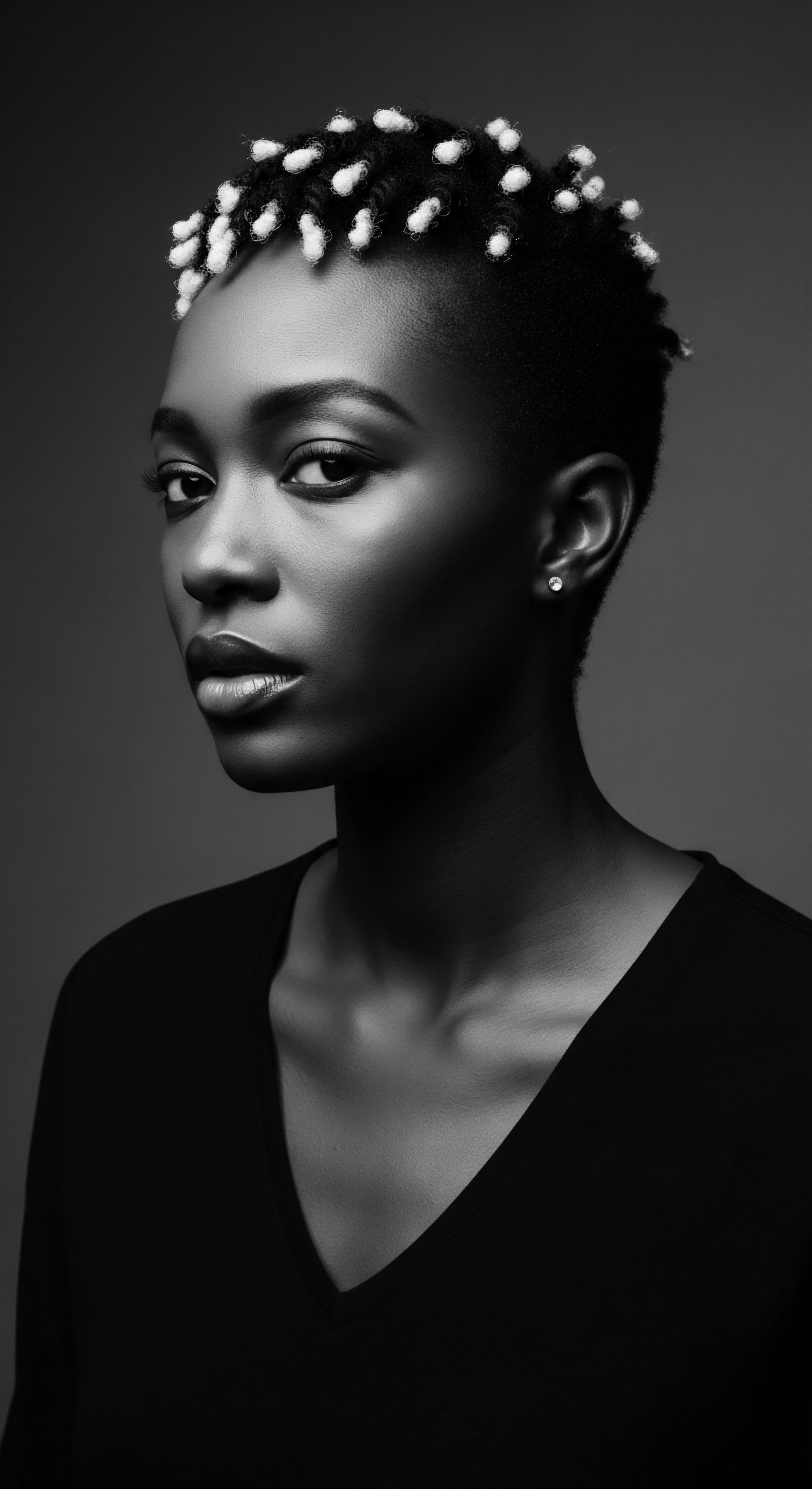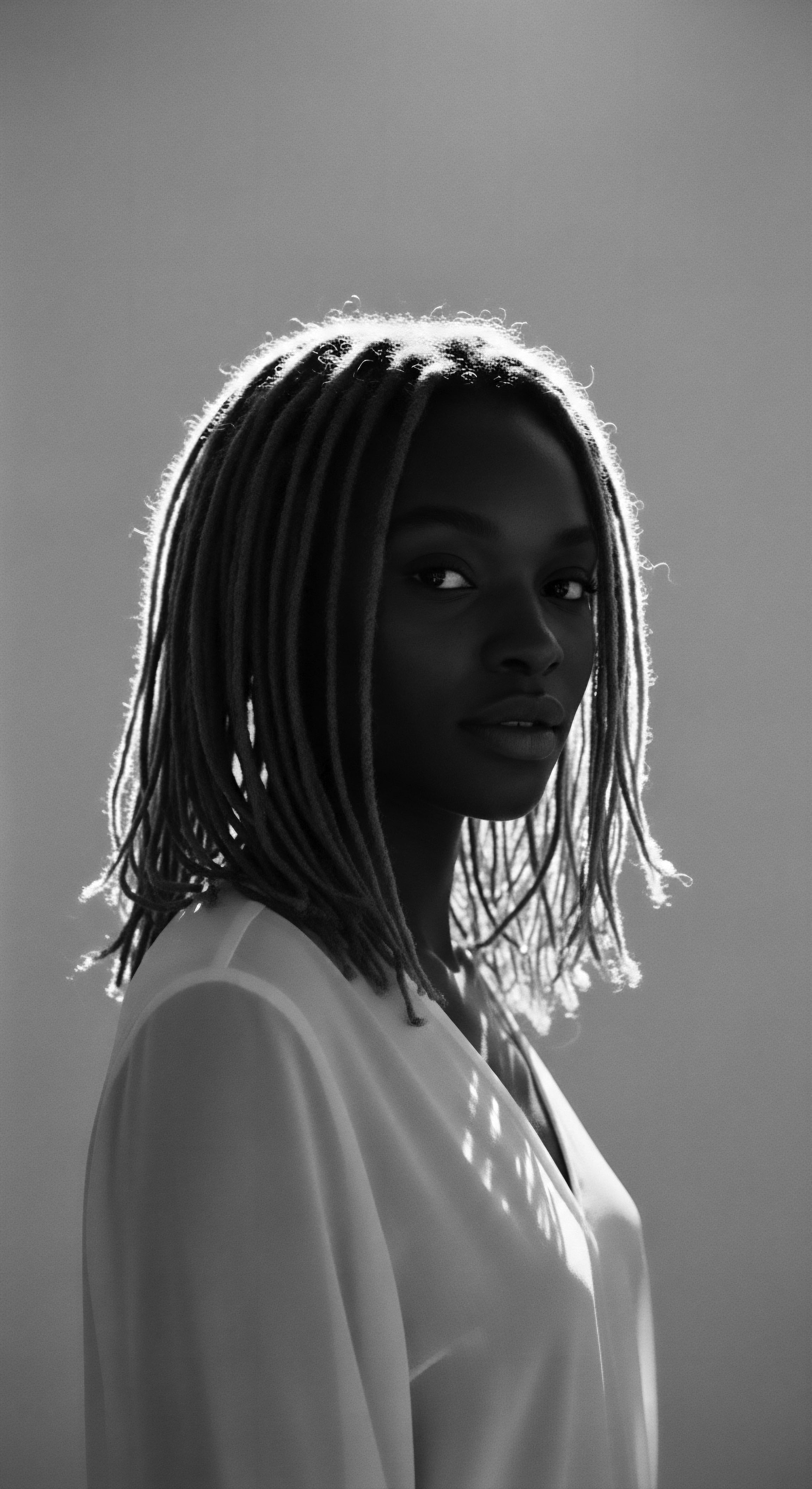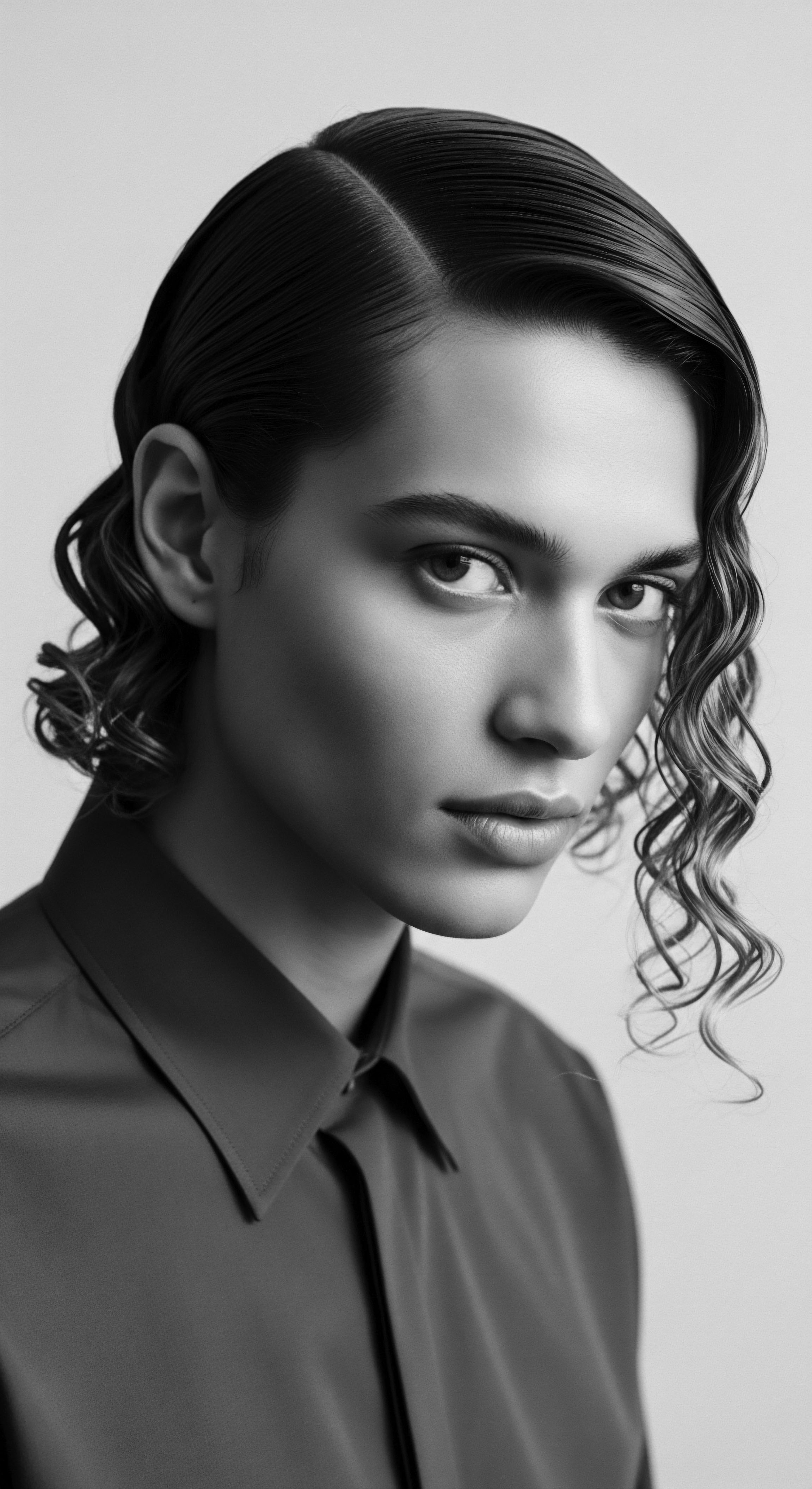
Why do certain fabrics protect textured hair overnight?
Certain smooth fabrics preserve textured hair’s moisture and integrity overnight, a practice deeply rooted in ancestral Black hair care heritage.

In what ways do historical practices validate current scientific understanding of textured hair?
Historical hair practices validate current science by demonstrating intuitive comprehension of textured hair's unique structure and needs.

What historical practices protected textured hair during sleep?
Ancestral practices protected textured hair during sleep by minimizing friction and retaining moisture, profoundly rooted in heritage.

Can traditional nighttime rituals truly protect textured hair from moisture loss?
Ancestral nighttime rituals, deeply rooted in heritage, offer profound moisture protection for textured hair through careful techniques and materials.

Can traditional head coverings prevent textured hair damage?
Yes, traditional head coverings offer crucial protection for textured hair by reducing friction, maintaining moisture, and shielding from environmental elements, a practice deeply rooted in heritage.

How did historical cultures protect textured hair during rest?
Historical cultures protected textured hair during rest through smooth coverings, protective styles, and natural oils, honoring its unique heritage and preserving its health.

What historical role did bonnets play for heritage?
Bonnets protected textured hair from friction and moisture loss, serving as a practical and symbolic shield rooted in heritage.

In what ways do historical hair traditions inform contemporary textured hair care philosophies?
Historical hair traditions deeply inform contemporary textured hair care by providing a heritage of protective styling, natural ingredient use, and communal care practices.

What ancestral nighttime rituals preserved textured hair’s hydration?
Ancestral nighttime rituals for textured hair hydration centered on protective coverings and natural emollients, preserving moisture and cultural heritage.

What ancestral practices protect textured hair overnight?
Ancestral practices protect textured hair overnight by minimizing friction and retaining moisture, a heritage of wise care.

Can preserving textured hair overnight reinforce ancestral beauty standards?
Overnight hair preservation affirms ancestral beauty standards by prioritizing health and protection for textured hair.

Why do textured hair types need specific sleep protection?
Textured hair needs sleep protection to mitigate friction and moisture loss, a practice rooted in ancestral heritage and cultural resilience.

What is the historical reason for bonnets in textured hair care?
Bonnets protect textured hair by reducing friction and preserving moisture, a practice rooted in centuries of Black ancestral care and resilience.

What significance do bonnets hold in hair heritage?
Bonnets protect textured hair by reducing friction and preserving moisture, a practice deeply rooted in Black and mixed-race ancestral hair heritage.

What historical practices parallel bonnet use for hair?
Historical head coverings and night wraps across cultures provided essential protection for textured hair, paralleling the modern bonnet's function.

Can bonnets improve hair moisture retention for coiled textures?
Bonnets improve moisture retention for coiled textures by reducing friction and creating a protective micro-environment, extending ancestral hair care traditions.

Can plant compounds truly fortify textured hair?
Plant compounds, deeply rooted in textured hair heritage, truly fortify strands by enhancing resilience and nurturing their distinct structure.

What ancestral hair care practices are scientifically supported?
Ancestral textured hair practices, like oiling and protective styling, are scientifically supported for moisture retention and damage reduction.

What historical traditions influence bonnet wearing today?
Bonnets embody centuries of textured hair heritage, stemming from ancestral protective head coverings, cultural resistance, and the enduring need for moisture retention and style preservation.

